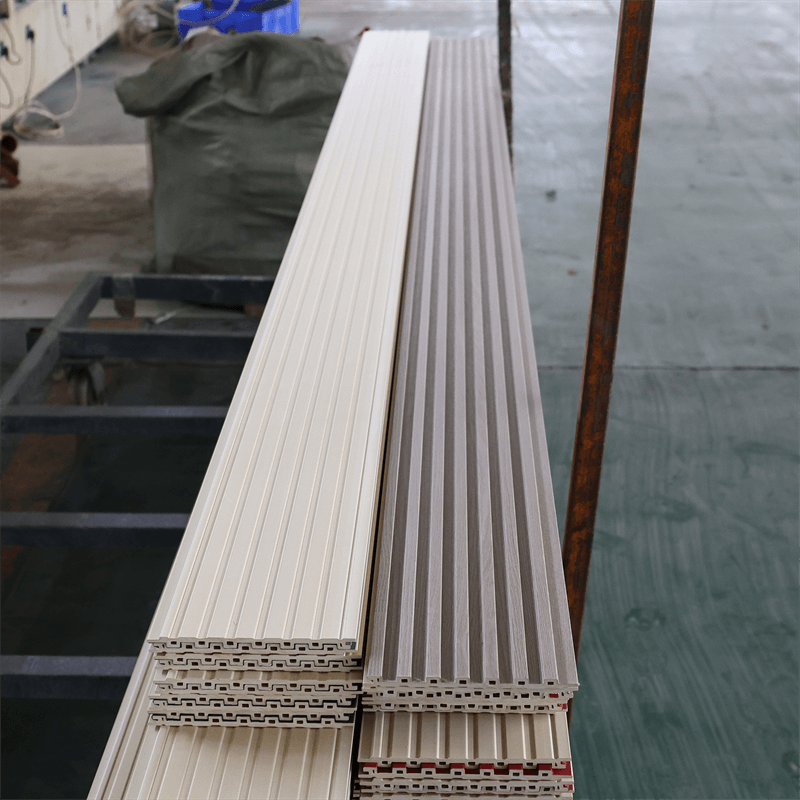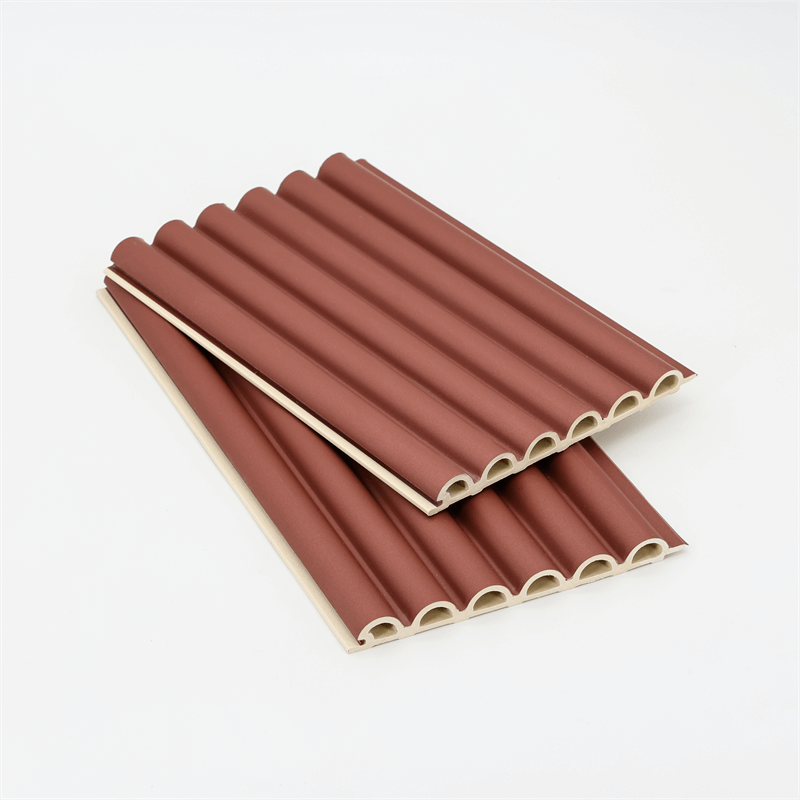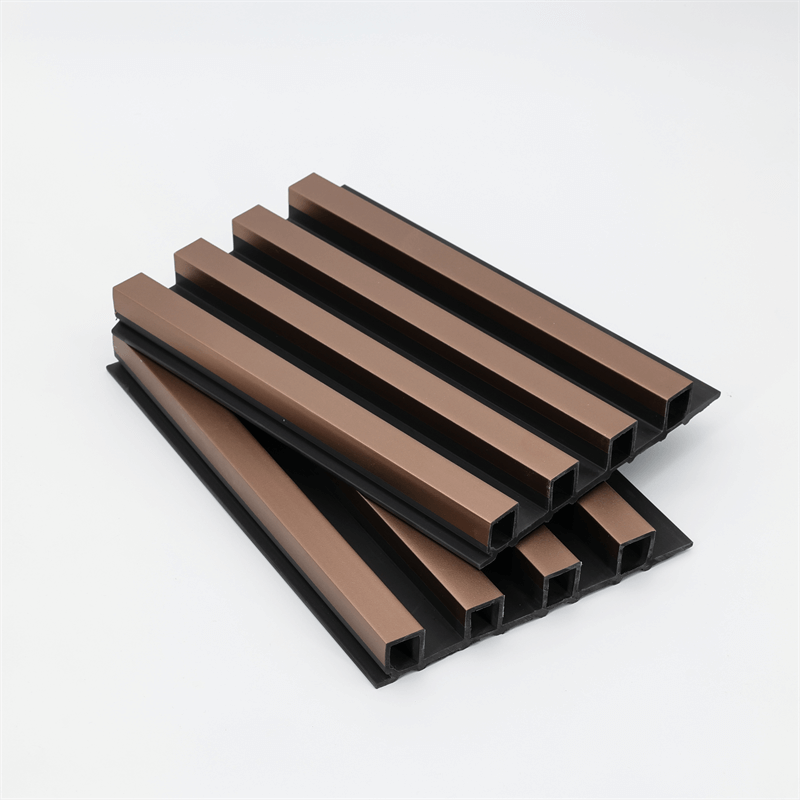In today’s world, energy efficiency is a crucial consideration in building design and construction.
Wood-Plastic Composite (WPC) wall panels not only offer aesthetic appeal but also play a significant role in improving energy efficiency.
This essay explores the various ways in which WPC wall panels contribute to energy efficiency, focusing on their insulation properties, thermal performance,
reduction of heat transfer, and impact on overall building energy consumption.

I. Insulation Properties of WPC Wall Panels:
A. Thermal Insulation: WPC wall panels possess excellent thermal insulation properties, which help to regulate indoor temperatures.
The combination of wood fibers and plastic polymers in WPC panels creates a layer of insulation that prevents heat transfer, reducing the reliance on artificial heating and cooling systems.
This insulation capability leads to improved energy efficiency by reducing the need for excessive energy consumption for temperature control.
B. Sound Insulation: In addition to thermal insulation, WPC panels also provide sound insulation benefits.
The dense composition of the panels helps to dampen external noise, creating a quieter and more comfortable indoor environment.
By reducing noise pollution, occupants can enjoy a peaceful living or working environment without the need for additional soundproofing measures, thereby contributing to energy savings.
II. Enhanced Thermal Performance:
A. Reduction of Thermal Bridging: Thermal bridging occurs when there is a break in the continuity of insulation, resulting in the transfer of heat through building components.
WPC wall panels help minimize thermal bridging due to their solid composition and uniform structure.
By reducing thermal bridging, WPC panels contribute to improved thermal performance and energy efficiency, as there is less heat loss or gain through the building envelope.
B. U-Value Improvement: The U-value is a measure of the thermal conductivity of a material, indicating its ability to conduct heat.
WPC wall panels have a low U-value, meaning they offer good insulation and reduce heat transfer through the building envelope.
This improved U-value helps to maintain stable indoor temperatures, reducing the need for excessive heating or cooling and resulting in energy savings.

III. Reduction of Heat Transfer:
A. Solar Heat Gain Reduction: WPC wall panels can effectively reduce solar heat gain in buildings.
The panels’ composition and surface reflectivity help to reflect a significant portion of solar radiation, reducing the amount of heat absorbed by the building.
By minimizing solar heat gain, WPC panels contribute to a cooler indoor environment, reducing the need for air conditioning and decreasing energy consumption.
B. Thermal Stability: WPC wall panels have excellent thermal stability, meaning they are less prone to expansion and contraction due to temperature changes.
This stability helps to maintain the integrity of the building envelope, reducing air leakage and heat transfer.
By minimizing thermal fluctuations, WPC panels improve energy efficiency by preventing energy loss and reducing the workload on heating and cooling systems.
IV. Impact on Overall Building Energy Consumption:
A. Reduced HVAC Load: The insulation properties, thermal performance, and reduction of heat transfer offered by WPC wall panels result in a reduced HVAC (Heating, Ventilation, and Air Conditioning) load.
With improved insulation, reduced thermal bridging, and minimized heat gain, the demand for heating and cooling systems is significantly reduced.
This reduction in HVAC load translates into energy savings and lower energy consumption throughout the building’s operational life.
B. Sustainable Energy Practices: By incorporating WPC wall panels into building design, architects and builders demonstrate their commitment to sustainable energy practices.
The energy efficiency provided by WPC panels aligns with green building principles and certifications, such as LEED (Leadership in Energy and Environmental Design), contributing to a more sustainable built environment.
Wood-Plastic Composite (WPC) wall panels play a significant role in improving energy efficiency in buildings.
Through their insulation properties, enhanced thermal performance, reduction of heat transfer, and impact on overall building energy consumption, WPC panels contribute to energy savings, reduced reliance on HVAC systems, and a more sustainable built environment.
By incorporating WPC wall panels into construction projects, architects and builders can enhance energy efficiency, reduce carbon emissions, and create comfortable and sustainable spaces for occupants.
The utilization of WPC panels exemplifies the fusion of aesthetics and energy efficiency, paving the way for a greener future in the construction industry.

In conclusion, the role of WPC wall panels in energy efficiency cannot be overstated.
These panels offer numerous benefits that contribute to reducing energy consumption, improving thermal performance, and creating more sustainable buildings.
The insulation properties of WPC panels help regulate indoor temperatures, reducing the need for excessive heating or cooling.
Their ability to minimize thermal bridging and improve U-values enhances the overall thermal performance of the building envelope.
WPC wall panels also play a crucial role in reducing heat transfer by minimizing solar heat gain and maintaining thermal stability.
By reflecting a significant portion of solar radiation and preventing thermal fluctuations, WPC panels contribute to a cooler indoor environment and reduce the load on HVAC systems.
This reduction in HVAC load translates into energy savings and lower energy consumption throughout the building’s operational life.
Moreover, the impact of WPC wall panels on overall building energy consumption is significant.
By reducing the reliance on HVAC systems, architects and builders can design more sustainable and energy-efficient buildings.
This not only lowers energy costs but also contributes to environmental preservation by reducing carbon emissions and promoting sustainable energy practices.
Incorporating WPC wall panels into construction projects aligns with green building principles and certifications, demonstrating a commitment to sustainability and responsible resource management.
By choosing WPC panels, architects, builders, and homeowners can contribute to a more energy-efficient and environmentally friendly built environment.
In conclusion, the utilization of WPC wall panels is a crucial step towards achieving energy efficiency goals in the construction industry.
By embracing these panels and their inherent insulation properties, thermal performance, reduction of heat transfer, and impact on overall building energy consumption, we can create buildings that are both sustainable and comfortable for occupants.
With the continuous advancement of WPC technology and its integration into building design, we can build a greener future that prioritizes energy efficiency and environmental stewardship.